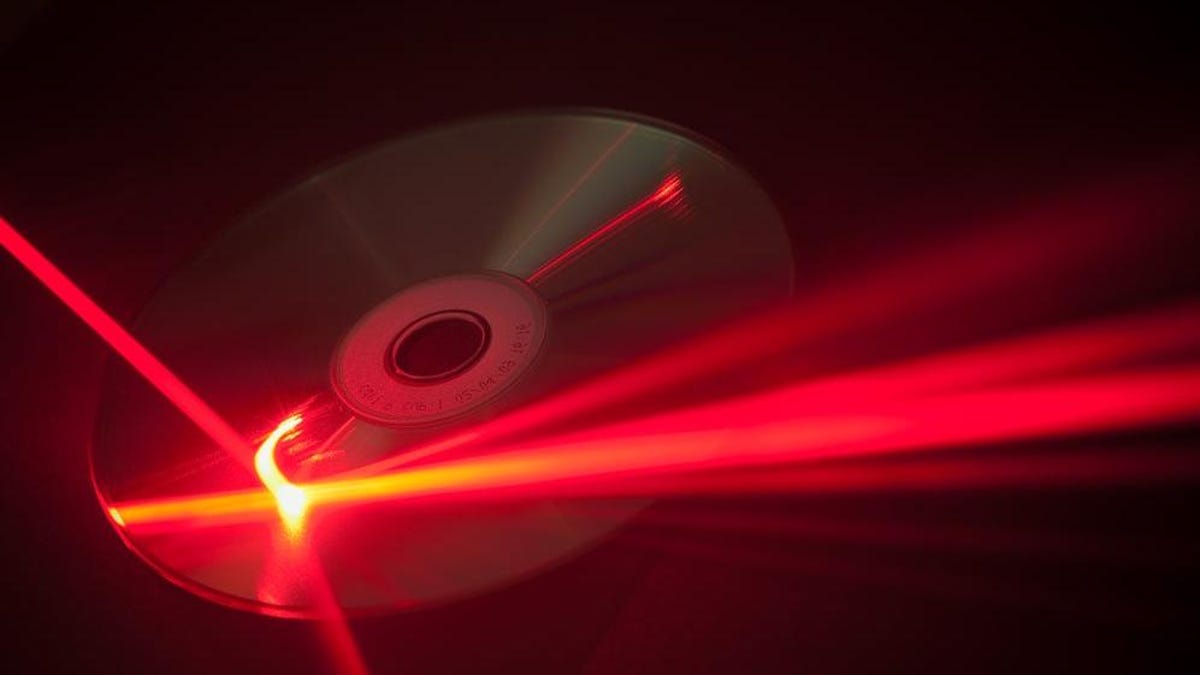Note: Unfortunately the research paper linked in the article is a dead/broken/wrong link. Perhaps the author will update it later.
From the limited coverage, it doesn’t sound like there’s an actual optical drive that utilizes this yet and that it’s just theoretical based on the properties of the material the researchers developed.
I’m not holding my breath, but I would absolutely love to be able to back up my storage system to a single optical disc (even if tens of TBs go unused).
If they could make a R/W version of that, holy crap.
It’s “only” 125 TB. Still a lot, and impressive. But I just hate the stupid click baity ‘petabit’ term. We use bytes GB and TB as a standard, just use the standard term it’s impressive enough.
But then the headline would have to say “Scientists Develop Optical Disc with measly 125TB’s of Storage”
Exclamation marks usually help … and comic sans
I like to express my storage sizes in nibs. I think that makes this a 250 teranib disk.
IMO the whole byte stuff is pretty confusing, people should have just sticked with bits, because that avoids implementation details.
One bit is the smallest amount of information. Bytes historically had different amounts of bits, depending on the architecture. With ASCII and the success of the 8 bit processor word of the Intel 8080/8085 processor, it is now defacto 8 Bit long.
But personally, byte seems a bit (no pun intended) like the imperial measurement system.
Gibibyte is the shit
Agreed. Bits are used more commonly when talking about transfer speeds, and bytes regarding storage.
I feel like I’ve seen bits used for storage on the scientific level since stuff like the pits and lands on a disc are expressed that way. To anyone in CS, you’d regard storage as a discrete whole part in some way. So bytes are fine. But when you’re developing storage, I believe you’d be concerned about bit density. Would need to read the paper though.
Sure, I did say commonly though. So for an article title in popular media you should probably use the common units to be as relatable as possible. But it’s whatever. I guess doing it this way gets people talking, eh.
125 holy cow. drooling
I just want this disc in a DVD-RAM format… It doesn’t have to be extremely fast just readable and writable… I used to love DVD-RAM until 4.25gb became nothing
8 bits in a byte, networks are measured in bits.
Data is stored in bytes (as the minimum size), it’s moved as a bitstream (continuous flow, without regard to individual byte boarders).
Hence storage is measured in bytes, network connections are measured in bits/second.
Are disks though?
I think the last time I saw storage measured in bits was a SNES cartridge.
I think the N64 measured cart sizes in bits too
They’re not even, they’re measured in bits per second. That’s like saying temperature is measured in calories.
We are talking about the size of a unit of data, not how much time elapses for whatever you’re talking about.
There are 8 bits in a byte, regardless if you’re talking about 1Mbps or 1MB/s of transfer speed calculation.
Storage are measured in bytes because data are stored in that form, with an individual bit being meaningless but a single byte often being significant. Network throughputs are measured in bits per second because the time-density of data is the significant thing there, not the total number of bytes transmitted.
There are 8 bits in a byte and there are 9 degrees Rankine in every 5 degrees Celsius, but if I told you the temperature for tomorrow in degrees Rankine, you would still think me weird for saying it that way and you might wonder what I was hiding.
There are almost always dozens of units we could use to describe something, but it’s okay to call it out when someone says something unusually as the original headline did.
I never claimed disks should be measured in bytes… And still with this per second thing which has no bearing on this. How data is stored is irrelevant to how it’s measured in transit. That’s kind of like saying kilometers are measured in kilometers per hour, but a drag strip is a quarter mile. So you’ve lost me on whatever point you’re trying to make there.
The original comment in this thread was about how the article lists the capacity of this experimental disk in bits, and posited that bytes are the usual unit to use.
The next comment was about how networks are measured in bits.
So my replies since then have been about two points, first that bits are still inappropriate to use here even if networks use them, and second that networks use bits per second, which is a different unit than bits.
That’s kind of like saying kilometers are measured in kilometers per hour, but a drag strip is a quarter mile
It’s more like saying speed is measured in kilometers per hour rather than kilometers (point 2) while also saying that the country we’re talking about measures distance in miles usually (point 1).
Gigabytes, or gibibyte? Yes gibibyte is a thing.
As much as i hate to say it, but due to marketting fuckery the usage of byte has ruined it all as a 2TB drive is not 2 * 1024 * 1024 * 1024 * 8 bits but instead 2 terabit ( 2*1000000000 )Then comes the discussion if “1KB” is 1024 bytes or if 1000 bytes is a kilobyte. If you ask me, 1KB is 1024 bytes. If you ask the people using the kibibytes system, 1KB is 1000 bytes…
Shits fucking complex and fucked up. Cant go wrong if you say it in bits though
“gigibyte” is not a thing, but “gibibyte” is.
Gigibytes are what Gigi stores on her CDs.
My mistake, fixed it :)
Pb is still a standard measurement. While it’s not very standard to use petabit instead of TB for data storage, it’s still a recognized unit.
Yeah “standard” was a poorly chosen word. I meant common, as bytes are much more commonly used for disk storage.
Bits are probably more useful when talking about specialized storage. Byte usually means 8 bits, but doesn’t always need to, and not all data is stored in byte chunks.
A bit is the smallest piece of usable datum, so that makes sense when discussing this technology.
Sorry to be that guy, but in this context byte is strictly defined as 8 bits, never anything else. It’s a strict definition in digital.
While I strongly agree with the idea behind your comment and gave you an upvote, at the physical layer it’s not strictly true - especially for optical discs. See https://en.wikipedia.org/wiki/Eight-to-fourteen_modulation for example.
That said, capacity listings should always be the capacity of the data that can be stored and retrieved as seen by the user, and that data would be in 8-bit bytes.
I’m already ready to buy the 32K ultra extended directors cut of the LOTR with this news.
Lol, I feel like it’d still be a multi-disc set.
It had better be.
It’s traditional to split Fellowship at Rivendell.
Let me guess, you’ll watch it on your 720p TV? /s
Gonna need a new release of Skyrim too.
The wet dream of all the people who pirate. This and crystal storage.
I so wish we had some affordable, high-density storage technology that we could record and then forget it in the attic for 20 years.
I mean there’s magnetic tape. It’s not, like, usable. But it’s also none too volatile if stored properly.
Yeah but I don’t have a climate controlled storage for it
I mean, you can make a smallish one as long as you don’t live anywhere that gets too hot or cold.
M-Disc exists?
100GB max per disc isn’t that high density, nor are they particularly affordable per GB.
That is just a hard drive with extra steps
Research is one thing, getting from concept to production is another. There was a lot of hype about holographic disc formats years ago that was promising capacities from 100 GB to several TBs but they never actually made it to the market.
With the ongoing “death” of physical media playing out in the consumer space, it will also probably be hard for these esoteric disc formats to attract the investment needed to develop them. There might be some enterprise interest if the tech is stable enough for archival use I suppose.
I could see it easily replacing tape libraries as backup devices in data centers. Without the economies of scale like we saw with DVD-RW, I doubt I’d be able to afford one until they hit the secondhand market. It would also be interesting to see something like that integrated into storage appliances which would let you have something approaching an on-prem version of Amazon’s Glacier tier.
Graphene PCs too.
If they could make a R/W version of that, holy crap.
If those turn up at any sort of reasonable cost, it would simplify my home backups so much. I only have about 14TB currently on my NAS (including workstation backups) but even at that size backups are a problem. The irreplaceable stuff (about 3TB worth) is backed up in the cloud. My ripped DVDs/BRDs would all have to be reripped, other stuff I’d just have to find again or live without. I’ve been looking at the advancements being made in tape drives, but those are all priced for business.
I honestly can’t think of a commercial application for storing that much data to disseminate outside an industrial use. Well I mean in a few years I guess video games will get that big, but other than that…
8k stereoscopic immersive feature length video is probably going to be a thing some day soon. Well… somebody will try it
Wouldn’t Backblaze be a solution for you?
Possibly. I honestly haven’t looked at the ecosystem in a few years. Back then BB’s plan structures would have forced me into their business solution and bill over $800/yr - more than 8x my current backup costs.
You could also go for cold storage, scaleway glacier costs €28/m. You could also consider a BX31 (10TB) Hetzner storage box for €25/m if you don’t need everything to be backed but do want quick retrieval times.
Since I work with AWS daily, Glacier was my first attempt. Glacier + Synology hyperbackup proved too fragile for my needs. I ended up needing to rebuild my archive about once a year or so. Then I had to choose between an expensive and time consuming cleanup, or paying for multiple copies.
Tell me you are American, with out telling me you are American…

So… Its the same? Lmao
deleted by creator
Whats the read write speed?
This is the best summary I could come up with:
Researchers from Scientists from the University of Shanghai for Science and Technology just figured out how to fit up to a petabit of data onto an optical disk by storing information in 3D.
Well, you can kiss those puny disks goodbye thanks to a new technique that can read and write up to 100 layers of data in the space of just 54-nanometres, as described in a new paper published in the journal Nature.
“This could greatly reduce the footprint as well as the energy consumption of the future big data centers, providing a sustainable solution for the digital economy,” said Min Gu, a professor at the University of Shanghai for Science and Technology, and one of the paper’s co-authors.
The technique required the researchers to develop a brand new material, which has the easy-to-remember name dye-doped photoresist with aggregation-induced emission luminogens, or AIE-DDPR if you’re in a hurry.
AIE-DDPR is a highly uniform and transparent film that lets researchers blast it with lasers at the nanoparticle scale with precision, allowing for an unprecedented storage method.
Shrinking the size and scale of data storage could have huge implications, not just for the business of the internet but also for the environmental footprint of the tech industry.
The original article contains 338 words, the summary contains 206 words. Saved 39%. I’m a bot and I’m open source!















